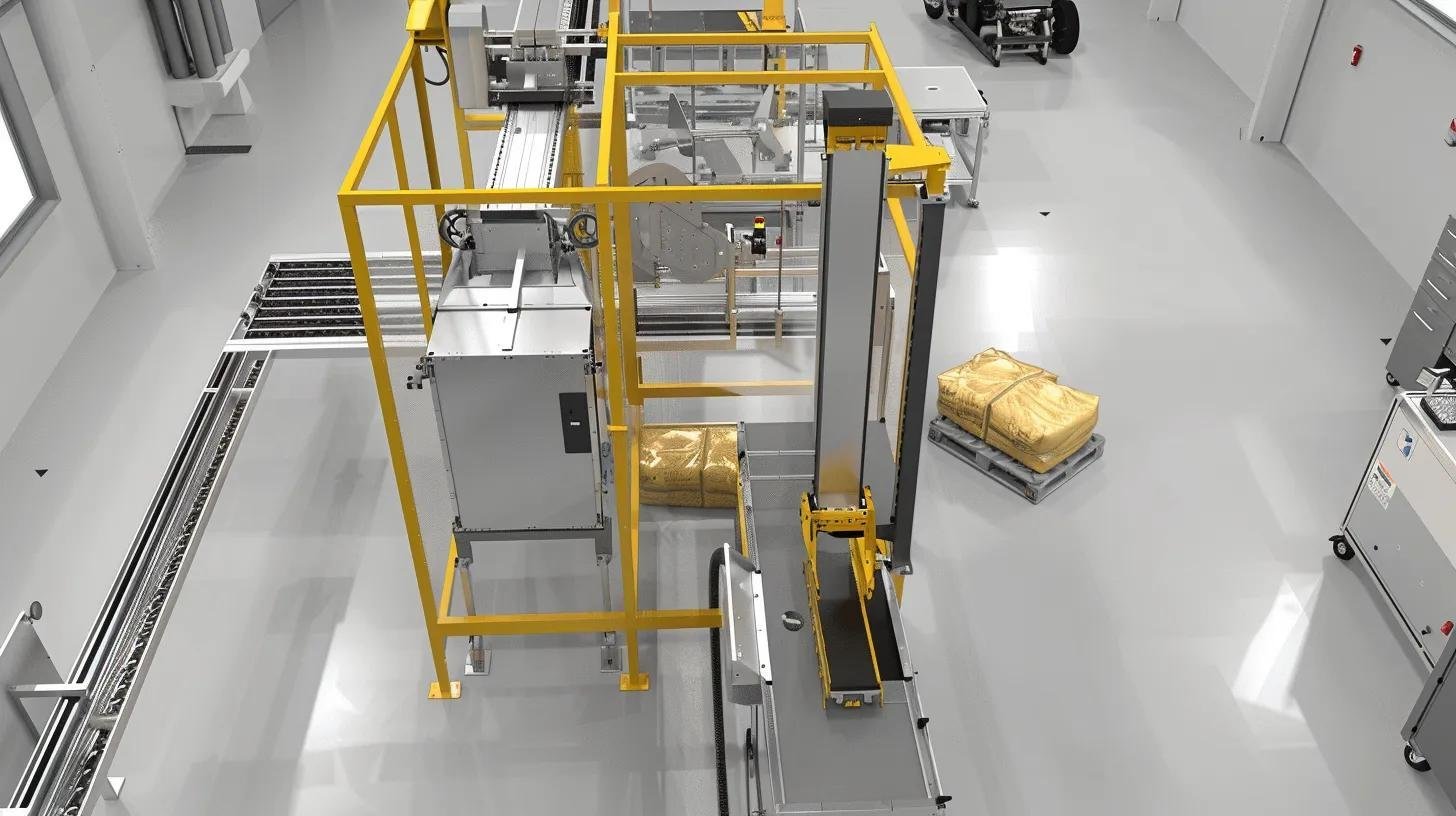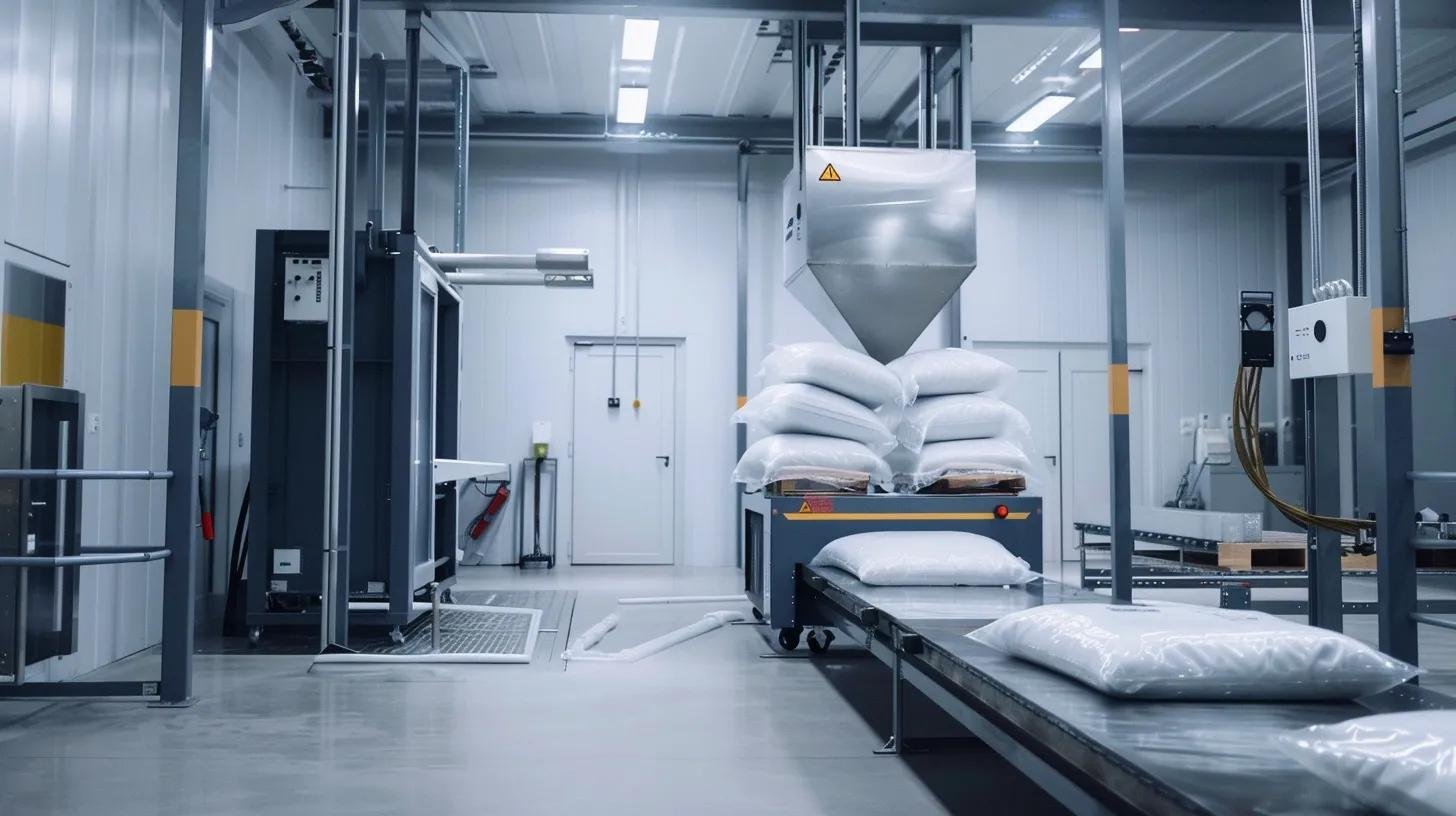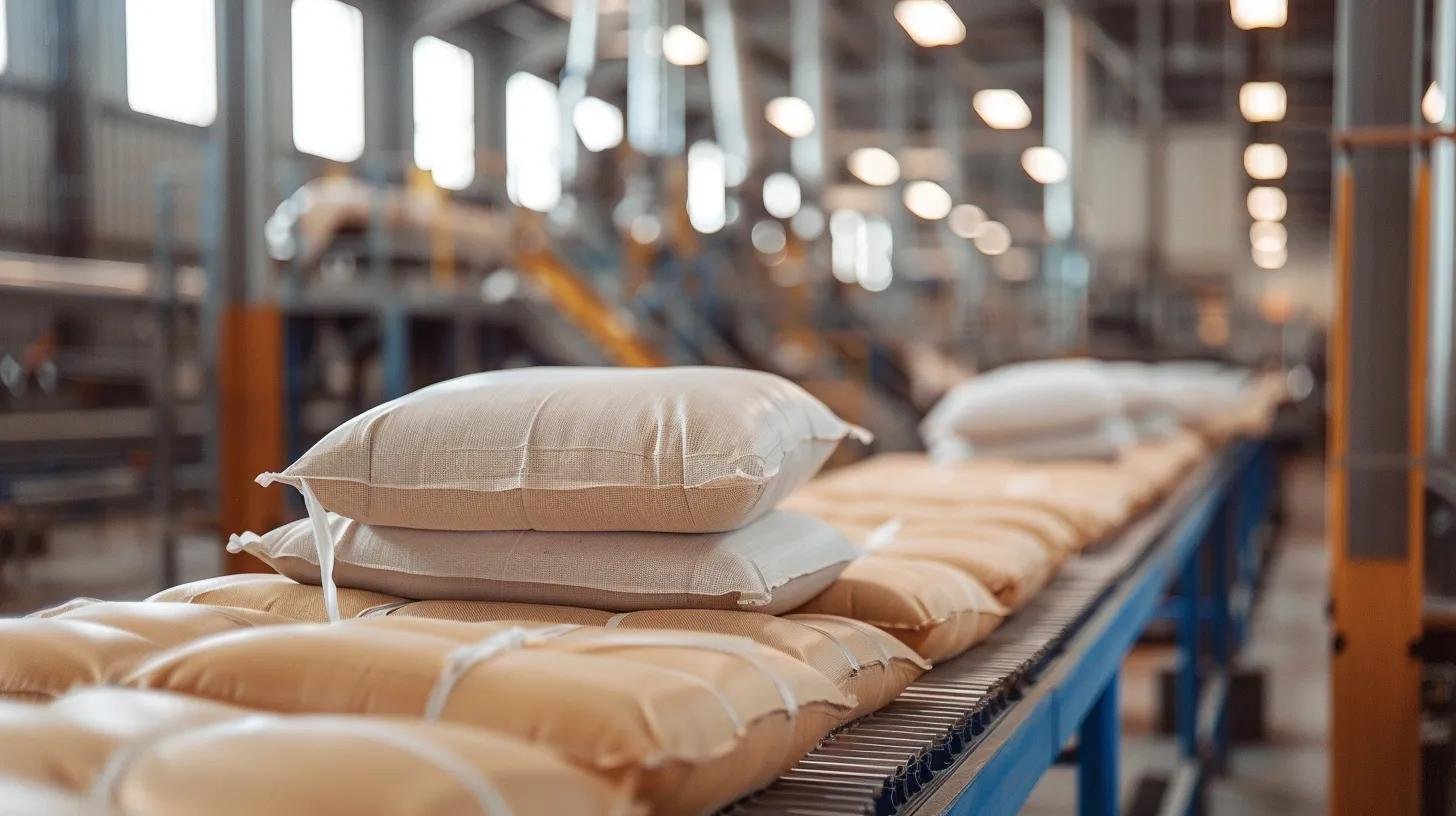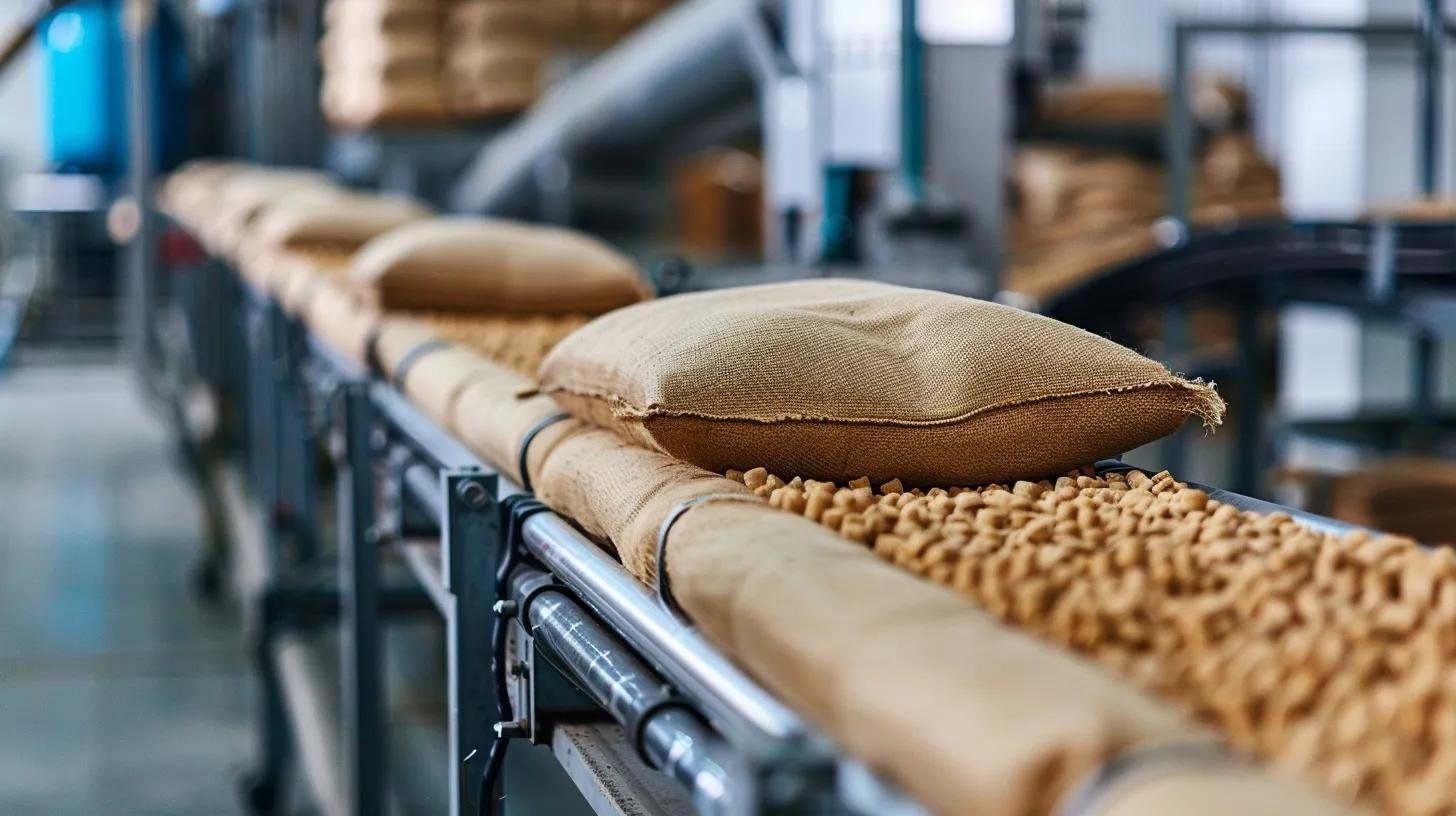How to Optimize Your Bagging Process

In today’s competitive marketplace, your bagging process is more than just packaging—it’s a critical profit center that can make or break your operational success. Companies with optimized bagging operations don’t just save money; they create sustainable competitive advantages that compound over time.
Whether you’re handling agricultural products, industrial materials, or consumer goods, the right optimization strategies can transform your operation from good to exceptional. This guide reveals the proven methodologies and cutting-edge technologies that industry leaders use to achieve remarkable efficiency gains.
The Hidden Cost of Inefficient Bagging
Most companies focus on obvious metrics like bags per hour, but inefficient bagging processes typically waste 15-30% of potential productivity. For a medium-sized operation processing 10,000 bags daily, this translates to:
Lost revenue: $50,000-$150,000 annually from reduced throughput
Increased labor costs: 20-40% higher staffing requirements
Material waste: 5-15% higher packaging costs due to errors and rework
Quality issues: Delayed shipments and customer complaints that damage long-term relationships
The ripple effects create bottlenecks throughout your entire production line, increase worker fatigue, and put you at a significant competitive disadvantage.

The Five Pillars of Bagging Excellence
1. Equipment Optimization: Your Foundation for Success
Modern bagging equipment can dramatically outperform older systems, but only when properly selected and configured. The key is matching equipment capabilities to your specific requirements:
Critical Selection Factors:
– Product characteristics (density, flowability, particle size)
– Volume requirements (peak and average throughput)
– Accuracy needs (weight tolerances and quality standards)
– Environmental conditions (temperature, humidity, dust levels)
Game-Changing Features to Consider:
– Multi-head weighers: Achieve ±0.1% weight accuracy at high speeds
– Automatic bag placement: Eliminate manual handling and reduce cycle times
– Integrated quality control: Real-time weight verification and reject systems
– Predictive maintenance: IoT sensors that prevent unexpected downtime
Even the best equipment won’t perform without proper setup. Implement regular calibration protocols, comprehensive preventive maintenance schedules, and thorough operator training programs. Real-time performance monitoring with automatic alerts ensures consistent peak performance.

2. Workflow Engineering: Design for Maximum Flow
The most efficient operations are designed from the ground up with workflow optimization in mind. Key principles include:
Smart Layout Design:
– Minimize material handling distances between process steps
– Eliminate bottlenecks by balancing capacity across all stages
– Enable parallel processing with multiple bagging lines
– Provide adequate space for equipment, materials, and personnel movement
Material Flow Optimization:
– Use gravity-fed systems wherever possible to reduce mechanical handling
– Implement pneumatic conveying for long distances and elevation changes
– Create strategic buffer zones to smooth workflow variations
– Deploy automated material handling systems (conveyors, robots, AGVs)
Reduce operator fatigue and increase productivity with optimal working heights, strategic tool placement, excellent lighting, and comfortable temperature control.
3. Process Standardization: Consistency Breeds Excellence
Standardized processes ensure consistent results regardless of operator or timing. Develop detailed Standard Operating Procedures (SOPs) for every aspect of the bagging process, from equipment startup to emergency procedures.
Comprehensive Training Programs:
– Initial certification with hands-on training and competency testing
– Ongoing education on procedures and best practices
– Cross-training to ensure multiple operators are qualified on each piece of equipment
– Comprehensive safety protocols and emergency procedures
Implement statistical process control with real-time monitoring, automated inspection systems, regular sampling protocols, and quick corrective action procedures for quality deviations.
4. Technology Integration: The Digital Advantage
Modern technology provides unprecedented visibility and control over bagging operations:
Automation Technologies:
– Robotic bag handling for consistent placement and orientation
– Automated bag sealing for perfect seals every time
– Palletizing robots for efficient stacking and wrapping
– Automated guided vehicles for seamless material transport
Digital Monitoring and Control:
– Real-time dashboards for instant visibility into performance metrics
– Predictive analytics to anticipate problems before they occur
– Remote monitoring capabilities to oversee operations from anywhere
– Data integration connecting bagging data with enterprise systems
Production planning systems optimize schedules and resource allocation, while quality management systems track and analyze metrics. Maintenance management schedules preventive maintenance, and inventory management optimizes material usage and ordering.
5. Continuous Improvement: The Never-Ending Journey
The most successful operations treat optimization as an ongoing process. Implement comprehensive performance measurement with Key Performance Indicators (KPIs), regular benchmarking against industry standards, and systematic trend analysis.
Proven Improvement Methodologies:
– Lean manufacturing: Eliminate waste in all its forms
– Six Sigma: Reduce variation and improve quality
– Kaizen: Continuous small improvements
– Total Productive Maintenance: Maximize equipment effectiveness

Advanced Optimization Strategies
Smart Scheduling and Production Planning
Efficient operations require sophisticated planning that considers multiple variables. Implement dynamic scheduling with real-time demand updates, resource optimization balancing labor and equipment availability, and sequence optimization to minimize changeover times.
Use predictive planning with demand forecasting based on historical data and trends, seasonal adjustments for demand variations, and capacity modeling to understand different scenarios.
Energy Efficiency and Sustainability
Modern operations must balance efficiency with environmental responsibility. Optimize energy usage with variable speed drives, efficient LED lighting with motion sensors, heat recovery systems, and comprehensive power monitoring.
Implement sustainable practices including material waste reduction, recycling programs for damaged materials, water conservation in cleaning processes, and carbon footprint tracking and reduction.
Technology Trends Shaping the Future
Artificial Intelligence and Machine Learning:
AI revolutionizes operations through predictive maintenance that prevents equipment failures, automated quality control with AI-powered inspection systems, and adaptive control that automatically adjusts processes to maintain optimal performance.
Internet of Things (IoT) and Industry 4.0:
Connected sensor networks provide real-time equipment monitoring, environmental condition tracking, and comprehensive material tracing throughout the process. Advanced data analytics enable big data processing, real-time decision making, and continuous optimization algorithms.
Advanced Robotics:
Collaborative robots (cobots) work safely alongside human operators with flexible, easily reconfigurable automation. Fully automated lines enable lights-out operation for high-volume products with integrated quality control and adaptive systems.
Measuring Success: Key Performance Indicators
Operational Metrics:
– Throughput: Bags per hour and Overall Equipment Effectiveness (OEE)
– Quality: Weight accuracy, seal integrity, and reject rates
– Efficiency: Labor productivity, material utilization, and energy efficiency
Financial Metrics:
– Cost indicators: Cost per bag, labor cost percentage, material cost percentage
– Return on investment: Payback period, net present value, internal rate of return
Common Pitfalls to Avoid
Technology Pitfalls:
Avoid over-automation by starting simple and focusing on bottlenecks. Ensure adequate system integration with proper data standards and comprehensive training.
Process Pitfalls:
Include operators in improvement planning, balance speed with quality, and maintain focus on total costs rather than just labor costs.
Management Pitfalls:
Ensure sustained leadership commitment, set realistic but challenging goals, and maintain regular progress reviews with celebration of achievements.

Conclusion: Your Path to Excellence
Optimizing your bagging process isn’t just about incremental improvements—it’s about transforming your operation to achieve breakthrough performance. The companies that excel in bagging efficiency create competitive advantages that compound over time through better customer service, higher employee satisfaction, reduced environmental impact, and stronger market positioning.
The journey requires a systematic approach addressing equipment, processes, people, and technology. It demands commitment from leadership, engagement from operators, and a culture of continuous improvement. Most importantly, it requires willingness to challenge assumptions and embrace new approaches.
The investment in bagging optimization pays dividends far beyond immediate cost savings. Every day you delay optimization is a day of lost productivity and missed opportunities. With the right approach, commitment, and execution, you can transform your bagging operation into a source of competitive advantage that drives your business forward.
Remember: excellence in bagging is not a destination—it’s a journey. The most successful companies never stop improving, innovating, and pushing the boundaries of what’s possible. Make your bagging process a source of pride, efficiency, and competitive advantage. Your customers, employees, and bottom line will thank you.
Ready to Optimize Your Bagging Process?
At Newlong Holland, we help manufacturers achieve maximum efficiency through proven bagging technology, advice, and integration support.
👉 Request our standard bagging questionnaire to find out how we can improve your production efficiency.
Contact us for tailored advice.
